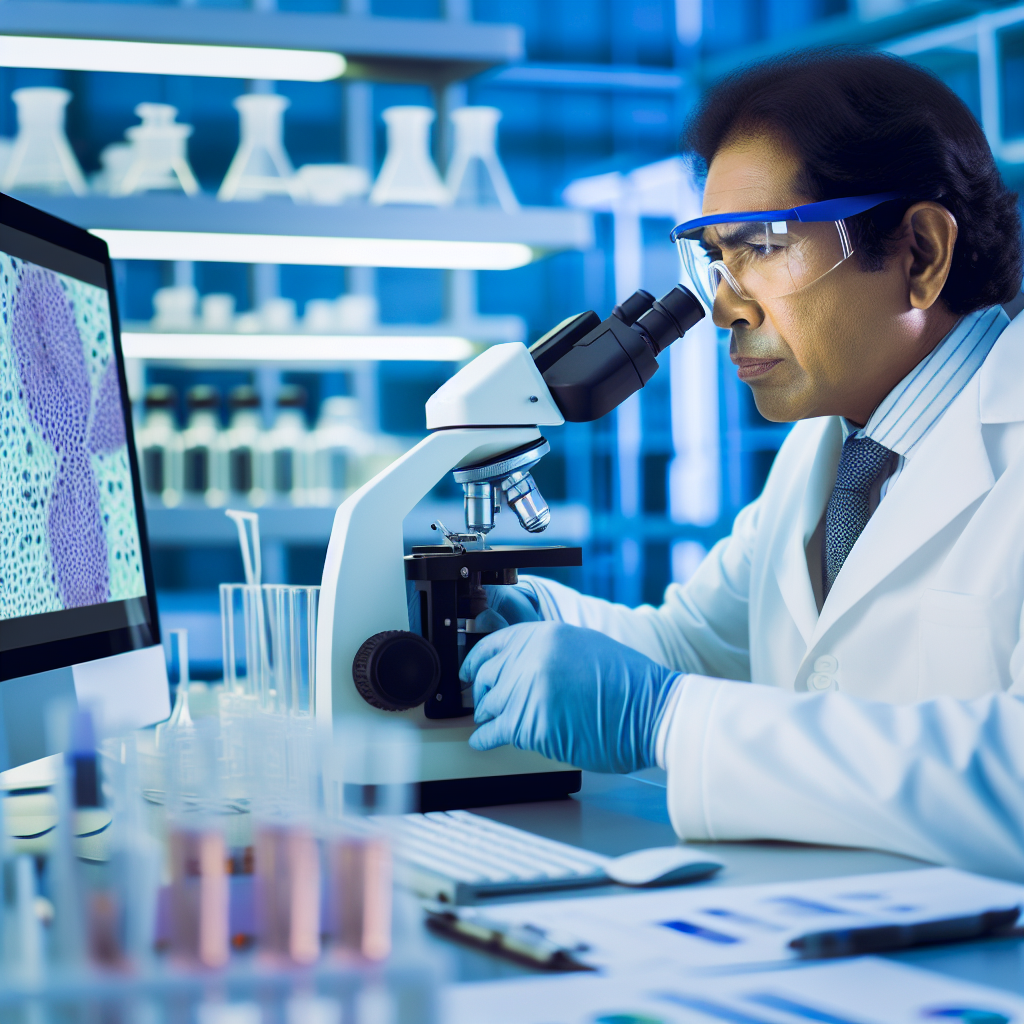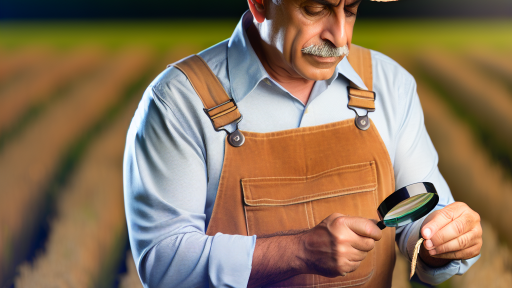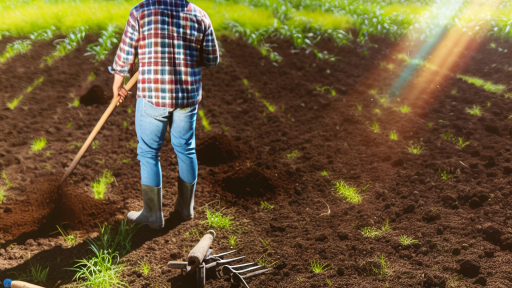Overview of Precision Agriculture and its Importance in Disease Forecasting
Precision agriculture utilizes technology to improve crop management.
It combines data analysis and farming techniques to enhance productivity.
This approach plays a crucial role in disease forecasting.
Understanding plant health is essential for effective disease management.
Role of Data in Precision Agriculture
Data collection is a cornerstone of precision agriculture.
Farmers use sensors and drones to gather real-time information.
This data informs decisions on irrigation, fertilization, and pest control.
Moreover, it aids in identifying areas vulnerable to diseases.
Thus, data-driven insights significantly enhance crop resilience.
Technology Enhancements
Modern technology offers various tools for farmers.
Geographic Information Systems (GIS) help in mapping fields.
Satellite imagery provides visuals that highlight crop conditions.
These tools enhance the understanding of potential disease spread.
Consequently, they assist in predicting outbreaks before they occur.
Impact of Early Detection
Early detection of diseases minimizes crop loss.
Transform Your Agribusiness
Unlock your farm's potential with expert advice tailored to your needs. Get actionable steps that drive real results.
Get StartedUsing precision agriculture tools, farmers can act quickly.
This proactive approach leads to more sustainable practices.
Furthermore, it supports the efficient use of resources.
As a result, it promotes higher yields and profitability.
Integrating Advanced Analytics
Data analytics plays a pivotal role in precision agriculture.
Advanced algorithms process vast amounts of farming data.
This analysis helps identify patterns in disease occurrences.
Consequently, farmers can implement targeted interventions.
Ultimately, this leads to more informed decision-making.
Benefits of Precision Agriculture in Disease Management
This approach enhances the efficiency of agricultural practices.
It reduces the need for chemical treatments.
Additionally, it fosters environmental stewardship.
Farmers enjoy increased yields and reduced costs.
In turn, this contributes to food security and sustainability.
Technological Tools Utilized in Precision Agriculture for Disease Prediction
Remote Sensing Technologies
Remote sensing technologies play a crucial role in disease forecasting.
They enable the monitoring of crop health from a distance.
Satellite imagery provides valuable information about field conditions.
Drones further enhance this capability by offering high-resolution images.
Farmers can assess crop stress and nutrient deficiencies accurately.
Consequently, early detection of potential disease outbreaks becomes possible.
Data Analytics and Machine Learning
Data analytics and machine learning are transforming disease prediction.
These tools analyze vast datasets to identify patterns and trends.
Models can predict the likelihood of disease occurrence based on various factors.
Climate data significantly enhances the accuracy of these models.
Showcase Your Farming Business
Publish your professional farming services profile on our blog for a one-time fee of $200 and reach a dedicated audience of farmers and agribusiness owners.
Publish Your ProfileAs a result, farmers can implement timely preventive measures.
Decision Support Systems
Decision support systems (DSS) assist farmers in making informed choices.
DSS integrate multiple data sources for comprehensive insights.
They often include weather forecasts, soil conditions, and crop health data.
This integrated approach enables proactive disease management strategies.
Therefore, farmers can optimize resource use and improve yield quality.
Mobile Applications and Tools
Mobile applications provide farmers with on-the-go access to information.
Many apps offer disease identification through image recognition technology.
Farmers can quickly receive feedback and recommendations.
This accessibility promotes timely interventions in the field.
Moreover, it encourages knowledge sharing among farming communities.
Soil Health Monitoring Sensors
Soil health monitoring sensors are essential for disease prevention.
These sensors collect real-time data on moisture, pH, and nutrient levels.
Healthy soil supports robust plant growth and resilience against diseases.
As a result, farmers can adjust their management practices accordingly.
This proactive approach leads to healthier crops and reduced disease incidence.
Collaboration with Research Institutions
Collaboration with research institutions enhances disease forecasting capabilities.
These partnerships facilitate access to the latest scientific findings.
Researchers often develop specific disease models tailored for local conditions.
By applying these models, farmers can refine their disease management strategies.
This collaboration helps create more sustainable agricultural practices.
Data Collection Methods
Sensors for Monitoring Plant Health
Sensors play a key role in precision agriculture.
They gather real-time data about soil conditions.
Various types of sensors detect moisture levels.
These sensors provide valuable feedback for crop management.
Furthermore, they help identify nutrient deficiencies early.
Drones for Aerial Surveillance
Drones offer unique perspectives on large agricultural fields.
Equipped with cameras, they capture high-resolution images.
This technology allows farmers to monitor crops effectively.
Moreover, drones can spot disease outbreaks quickly.
Farmers can take timely actions based on drone data.
Satellite Imagery for Large Scale Monitoring
Satellite imagery enables extensive monitoring across vast areas.
This method provides comprehensive data on crop health.
It helps in assessing changes over time and space.
Farmers can thus identify patterns in plant health.
Additionally, satellite data supports better decision-making.
Integration of Data Sources
Combining sensor data, drone imagery, and satellite feeds enhances insights.
This integrated approach leads to more accurate predictions.
Farmers leverage diverse data sources for optimal outcomes.
Consequently, they improve disease forecasting significantly.
Showcase Your Farming Business
Publish your professional farming services profile on our blog for a one-time fee of $200 and reach a dedicated audience of farmers and agribusiness owners.
Publish Your ProfileSuccessful data integration fosters sustainable practices.
Explore Further: Mulching Techniques to Boost Crop Productivity
Analysis Techniques: Machine Learning and Data Analytics in Disease Forecasting
Introduction to Machine Learning
Machine learning transforms agriculture by predicting crop diseases effectively.
It analyzes historical data, providing insights into potential outbreaks.
Moreover, farmers can make informed decisions based on accurate predictions.
The Role of Data Analytics
Data analytics is vital in processing large volumes of agricultural data.
It identifies trends and patterns in disease occurrences over time.
Additionally, researchers can correlate weather data with disease outbreaks.
Types of Machine Learning Techniques
Supervised learning uses labeled data to train algorithms.
This method predicts disease severity based on historical data.
Unsupervised learning identifies hidden patterns in unlabeled data.
It helps discover previously unknown disease correlations.
Implementing Predictive Models
Predictive models provide actionable insights for farmers.
These models assess risk levels for specific crops and conditions.
Farmers can apply targeted interventions to mitigate disease impact.
Case Studies and Success Stories
A case study in California showcases the successful use of machine learning.
Researchers utilized satellite imagery and weather forecasts.
This approach improved the accuracy of disease predictions significantly.
Challenges in Adoption
Despite advantages, obstacles remain in adopting these technologies.
Data quality and availability pose significant challenges to analysis.
Moreover, some farmers lack technical expertise to implement these solutions.
The Future of Disease Forecasting in Agriculture
Future advancements in machine learning will enhance disease forecasting.
Integration with IoT devices will offer real-time monitoring capabilities.
Ultimately, these technologies can lead to more sustainable agricultural practices.
Find Out More: Training Farmers on Effective Post-Harvest Techniques
Case Studies: Successful Implementation of Precision Agriculture Techniques in Disease Management
Farmers Utilizing Drones for Early Detection
Farmers in Iowa have embraced drone technology for crop monitoring.
These drones capture high-resolution images of fields.
This helps identify disease outbreaks before they spread.
By analyzing the images, farmers can pinpoint affected areas.
As a result, they apply targeted treatments quickly.
This technique reduces chemical usage and costs.
Predictive Analytics for Disease Forecasting
Agricultural firms in California use predictive analytics to manage crops.
They collect data on weather patterns and soil conditions.
Advanced algorithms analyze this data to forecast diseases.
Farmers receive timely warnings about potential outbreaks.
Consequently, they can implement preventive measures effectively.
This proactive approach enhances overall crop health.
Integrating Sensors for Real-Time Monitoring
A vineyard in Oregon has integrated soil sensors into their operations.
These sensors monitor moisture levels and nutrient availability.
This technology allows for real-time decision-making.
Showcase Your Farming Business
Publish your professional farming services profile on our blog for a one-time fee of $200 and reach a dedicated audience of farmers and agribusiness owners.
Publish Your ProfileFarmers can check for factors contributing to disease development.
With this information, they can adjust irrigation and fertilization.
Such adjustments minimize the risk of disease onset.
Collaborative Research Efforts to Combat Diseases
Universities and farming cooperatives often partner in research initiatives.
One notable project involves studying resistant crop varieties.
Researchers test these varieties under various environmental conditions.
The findings help farmers select appropriate crops for their regions.
More importantly, resistant crops reduce reliance on chemical treatments.
This collaboration fosters innovation in disease management strategies.
Total Farm Management Using Geographic Information Systems
A ranch in Texas uses Geographic Information Systems (GIS) for management.
GIS technology compiles various types of agricultural data.
This includes topography, soil types, and historical disease occurrences.
Farmers can visualize disease patterns over time.
Understanding these patterns aids in making informed decisions.
Moreover, it optimizes resource distribution across fields.
See Related Content: IoT Sensors Transforming Crop Analytics Today

Farm Management Software: Integrating Disease Forecasting into Daily Operations
Importance of Disease Forecasting
Disease forecasting is essential for modern agriculture.
It enables farmers to anticipate potential outbreaks.
This approach minimizes crop loss and enhances yield.
Role of Farm Management Software
Farm management software plays a crucial role in integrating disease forecasting.
It provides tools for monitoring and analysis.
Additionally, it streamlines communication among farm staff.
Features to Look For
- Real-time data analysis capabilities enhance decision-making.
- Weather integration helps predict disease risks accurately.
- User-friendly interfaces improve accessibility for all operators.
How to Implement Disease Forecasting
Start by selecting appropriate farm management software.
Ensure it includes disease forecasting features.
Train staff on how to use the software effectively.
Regularly update the software to ensure data accuracy.
Monitoring and Adjusting Strategies
After implementation, monitor the system’s performance continuously.
Adjust your strategies based on the forecasting data received.
Collaboration among team members is key for effective management.
Case Studies of Successful Integration
Several farms have successfully integrated disease forecasting.
For example, Green Acres Farm utilized software to reduce blight.
As a result, they achieved a 20% increase in yield.
Such successes highlight the importance of technology in agriculture.
See Related Content: Aquaponics Water Management Tips
Challenges and Limitations in Precision Agriculture for Disease Forecasting
Data Collection Issues
Collecting accurate data can be challenging in precision agriculture.
Weather data, soil conditions, and crop health variables vary significantly.
Furthermore, sensor calibration can affect data accuracy.
Inconsistent data collection methods lead to unreliable forecasts.
Technological Barriers
Not all farms have access to advanced equipment and technology.
High costs deter many farmers from adopting precision agriculture practices.
Showcase Your Farming Business
Publish your professional farming services profile on our blog for a one-time fee of $200 and reach a dedicated audience of farmers and agribusiness owners.
Publish Your ProfileAdditionally, limited internet connectivity can hinder data transmission.
Some farmers may lack the necessary technical skills to use these technologies.
Environmental Factors
Environmental variability can complicate disease forecasting efforts.
Factors such as climate change impact disease patterns unpredictably.
Different crops respond uniquely to environmental stressors.
Therefore, generalized models may not accurately predict disease outbreaks.
Economic Constraints
Farmers face economic pressures that limit investment in technology.
Budget constraints can prevent them from adopting advanced forecasting tools.
Profitability concerns hinder the willingness to change established practices.
Data Interpretation Challenges
Data analysis requires specialized knowledge and expertise.
Misinterpretation of data can lead to poor decision-making.
Additionally, integrating data from various sources is often complex.
Farmers may struggle to understand the implications of forecasted data.
Resistance to Change
Many farmers are hesitant to adopt new methodologies.
This resistance can stem from tradition and skepticism towards technology.
Moreover, peer influence plays a role in decision-making among farmers.
Change can be slow, even when the benefits are clear.
Future Trends: Innovations in Technology and Their Role in Disease Forecasting
Data Analytics in Agriculture
Data analytics revolutionizes how farmers forecast diseases.
It enables real-time analysis of various factors affecting crops.
The integration of big data improves predictive capabilities significantly.
This information enhances decision-making in disease management.
Machine Learning Algorithms
Machine learning algorithms are transforming disease prediction models.
These models analyze historical data to identify potential outbreaks.
With continuous learning, they adapt to changing environmental conditions.
This adaptability increases the accuracy of forecasts over time.
Remote Sensing Technologies
Remote sensing technologies provide invaluable insights from above.
Drones capture detailed images of crop health across large fields.
They detect stress indicators before visible symptoms appear.
This early detection allows for timely interventions and treatment.
Precision Biotechnology
Precision biotechnology tailors solutions to specific plant problems.
This technology identifies resistant traits in plants effectively.
Biopesticides developed through biotechnology offer eco-friendly disease control.
Consequently, these innovations minimize chemical pesticide use.
Integrated Pest Management Systems
Integrated pest management systems combine various techniques for effectiveness.
They utilize cultural, biological, and chemical controls together.
This holistic approach addresses the complex interactions of pests and diseases.
Farmers report significant decreases in disease incidence using these systems.
Collaboration with Technology Firms
Collaboration with technology firms boosts agricultural innovation.
Farmers benefit from custom software solutions tailored to their needs.
These partnerships enhance the implementation of precision agriculture techniques.
Showcase Your Farming Business
Publish your professional farming services profile on our blog for a one-time fee of $200 and reach a dedicated audience of farmers and agribusiness owners.
Publish Your ProfileAs a result, they achieve better forecasting and management of diseases.
Additional Resources
USDA Science and Research Strategy, 2023-2026: Cultivating …
Integrative approaches in modern agriculture: IoT, ML and AI for …




